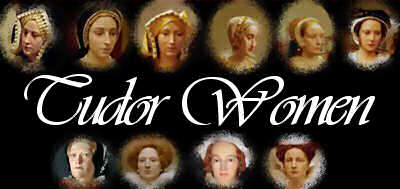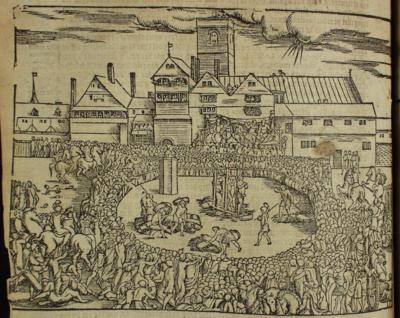As today is International Women’s Day, I thought it would be good to look at the women I’ve come across in my research into Anne Boleyn and Tudor times and to celebrate their lives. These women inspire us so much – whether they give us creative inspiration, act as role models or just feed our hungry minds with their wonderful stories – and I thank them for that.

Here is a brief rundown on each of the women I admire – you can click on their names to read more about them:-
- Catherine of Aragon – Too many times, Catherine is just thought of as the woman Henry VIII divorced, but she was an amazing woman in reality. She was a royal princess, a popular queen and a woman with real dignity. Henry trusted her enough to leave her as Regent while he went to France and she did him proud, protecting England from the Scottish invasion. She also fought for her faith and her rights, and those of her daughter, when Henry pressed her for a divorce. She would not cave in.
- Anne Boleyn – Anne Boleyn is also too often written off. To many, she is the wife who Henry executed because she committed adultery or because she was a witch, but it’s time that these myths were done away. I hope that this site does its bit in telling Anne’s real story!
- Jane Seymour – Known as the wife who gave Henry VIII his longed-for son and then died! There are two main school of thoughts regarding Jane Seymour: 1) She was a meek and mild woman who did her best to be the wife that Henry VIII wanted and needed or 2) Jane played a game, learning from Catherine of Aragon and Anne Boleyn, and schemed her way into Henry’s affections. Either way, we can admire her!
- Anne of Cleves – What is there to admire about the woman often referred to as the “Flanders Mare”? Well, I think we can admire her for her bravery in leaving her homeland to come to a country where she did not know the language and to marry a King who had divorced his first wife, executed his second and sat around while his third died after childbirth! I think we can also admire her for her pragmatism and common sense, in being able to get out of the marriage with not only her head but also a host of property and lands, and a great title (The King’s Sister).
- Catherine Howard – This is the wife I pity. She was so young and Henry, by this time, was a bad-tempered, foul-smelling, obese monster. She was naive in thinking that her colourful past could be entirely forgotten and that she could get away with flirting with and secretly meeting Thomas Culpeper, but greatest sin was in shattering the King’s illusions of youth and virility.
- Catherine Parr – Catherine Parr is fast becoming my second favourite wife, after Anne Boleyn, because she was an amazing person. Obviously she can be admired for being the one who got away and who survived a coup against her, but she was also a published author, a keen reformist in times when it was dangerous to be so and she was a huge influence on Lady Jane Grey and Elizabeth I. She also was a mother figure to Elizabeth and Edward, and a good friend to Mary.
- Anne Askew – I’ve never actually written about Anne Askew but she is one of history’s forgotten heroines. Anne was a friend Catherine Willoughby, the Duchess of Suffolk, and also had links with Catherine Parr, the Queen. Anne was a poet and an outspoken Protestant and, in “The Sisters Who Would Be Queen”, Leanda de Lisle writes that Anne Askew “had broken a taboo by disobeying her husband and quarrelling with him over religion. He had thrown her out and she had subsequently been arrested for preaching that Christ was not really present in the consecrated bread and wine of the Mass.”
As a result of her preaching and ownership of banned texts, Anne Askew was arrested for heresy, racked at the Tower of London (the only woman known to have been tortured in this way at the Tower) “until the strings of her arms and eyes were perished”. She would not give the Privy Councillors (said to be Wriothesley and Rich) any names of court contacts, however much they tortured her, and she also refused to recant her religious views. On the 16th July 1546 she was carried to the stake at Smithfield, as she was unable to walk, and was burned as a heretic. Askew’s story had a great effect on the young Lady Jane Grey.

- Lady Jane Grey – The Victorians saw Lady Jane Grey as a tragic heroine, some see her as a young girl who was manipulated by those around her, others see her as a Protestant martyr and still others see her as a woman who was a leader and anything but a pathetic victim. Whatever your personal view of Lady Jane Grey, there is much to admire about her: her intelligence, her strong faith, the fact that she took on the crown, her strength of character and the fact that she refused to recant her beliefs in the face of certain death.
- Mary I – Another Tudor Queen who is much maligned and known as “Bloody Mary”. A queen known only for the burnings of heretics during her reign. Yet, as Linda Porter says in “Mary Tudor: The First Queen”, “her bravery put her on the throne and kept her there, so that when she died she was able to bequeath to Elizabeth a precious legacy that is often overlooked: she had demonstrated that a woman could rule in her own right.”
- Elizabeth I – It is pretty obvious from the fact that I also run The Elizabeth Files that I greatly admire Elizabeth I, and not just because she was Anne Boleyn’s daughter and legacy! Elizabeth overcame the stigma of being the “bastard” daughter of the “wh*re” Anne Boleyn to become one of the greatest monarchs England has ever had, the monarch whose reign is known as “The Golden Age”.
- Mary Queen of Scots – What is there to admire about the woman who is said to have plotted against Elizabeth I? Well, like Elizabeth, Mary was a strong woman living in a male-dominated world and her life was full of tragedy and struggles: becoming Queen of Scotland as a baby, death of first husband (Francis II), murder of personal secretary (David Rizzio), murder of second husband (Lord Darnley), possible rape by the Earl of Bothwell (her third husband), imprisonment/house arrest from 1568 until her execution in 1587. Whatever the rights and wrongs of it, she was a woman who stuck to her beliefs, both her Catholic faith and the belief that she was England’s rightful Queen.
Thanks to Jéssica Melo for the wonderful Tudor women banner!
Woodcut of the Burning of Anne Askew and Others from Knowledge Bank.